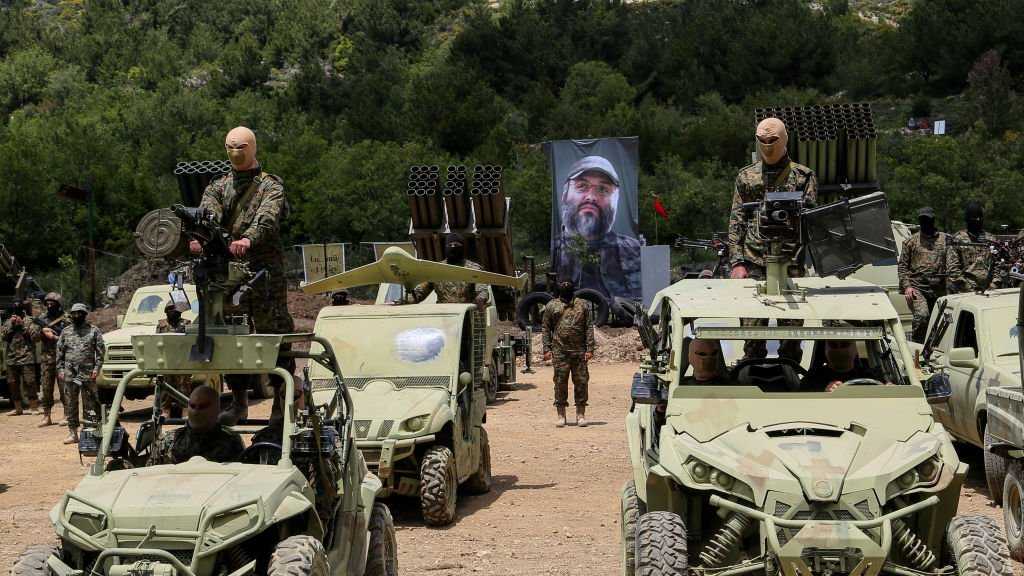AhlulBayt News Agency: Hezbollah, which emerged in the early 1980s as a small movement aimed at resisting “Israeli” occupation in Lebanon, has transformed from groups into a formidable military force. Despite recent setbacks, the group remains a major threat to “Israel”, which would face substantial casualties if it engaged Hezbollah on the ground. This was particularly evident during Israel's latest incursions into Lebanese territory, where Hezbollah's military strengths were prominently displayed, resulting in the deaths of at least eight “Israeli” special forces. Various news outlets, including Haaretz, CNN, Rutter, and AJC.org, have highlighted Hezbollah's sophisticated drones, long-range missiles, and extensive underground tunnel networks, all of which pose significant challenges to “Israeli” military operations. This essay explores how Western media perceive Hezbollah's military capabilities, focusing specifically on its drone technology, missile systems, underground tunnel networks, and the combat experience acquired during the Syrian Civil War.
Drone Warfare
A recent article in Haaretz titled “‘Israel’ Approaches War in the North with No Decisive Answer to Hezbollah's Drones” emphasizes the evolution of Hezbollah’s military capabilities, particularly its strategic use of drones. The article notes that Hezbollah’s integration of drone technology represents a significant shift in modern warfare. The group effectively employs drones for precise attacks on “Israeli” military positions, conducting reconnaissance and accurately locating targets. This capability enables coordinated strikes with anti-tank rockets and missiles, allowing Hezbollah to project power while minimizing risks to its ground troops. The sophistication and numbers of these drones underscore their importance in modern asymmetric warfare.
Moreover, the article highlights the use of low-flying drones for intelligence gathering and attacks, with FPV [First Person View] racing drones being the latest innovation. These small, remote-controlled aircraft can reach speeds of up to 200 km/h and perform complex maneuvers, complicating the operational environment for “Israeli” forces. The advantages of these drones include their low cost, availability, and ease of use. Additionally, Hezbollah's drones can frequently change frequencies, making detection and disruption challenging. Iran's advancements in drone technology further complicate the situation, as some drones operate on pre-programmed instructions or through physical fiber optics, rendering them immune to electronic disruption.
Long-Range Missiles
Another significant aspect of Hezbollah's military strength is its arsenal of long-range missiles. As outlined in articles from CNN, Rutter, Haaretz, and AJC.org, Hezbollah is likely the most heavily armed non-state group in the world, with an arsenal that is more sophisticated and destructive than that of Hamas. The group has amassed thousands of missiles capable of striking deep into “Israeli” territory. Many of these missiles are equipped with precision-guidance systems, allowing Hezbollah to conduct more accurate retaliatory strikes against strategic targets in “Israel”, including military bases and civilian infrastructure. The group’s ability to launch a large volume of missiles in a short period poses a substantial threat to “Israel”, potentially overwhelming its defense systems. Recently, Hezbollah has sought to undermine “Israel’s” renowned missile system, the Iron Dome, by attacking its platforms and overwhelming it with swarms of drones and short-range missiles. This strategy aims to create openings for other projectiles to penetrate deeper into “Israeli” territory, further complicating "Israel's" defensive posture.
Underground Tunnels: A Strategic Asset
A 2021 report by Alma, an “Israeli” think tank specializing in Hezbollah, indicated that Iran and North Korea assisted in building a network of tunnels in the aftermath of the 2006 war, which, according to “Israeli” estimates, extends for hundreds of kilometers. Recent footage has shown Hezbollah fighters driving trucks with rocket launchers through these tunnels. These tunnels serve multiple strategic purposes, including facilitating the movement of troops and supplies, sheltering fighters from aerial bombardments, and launching surprise attacks on “Israeli” forces. Reports from AJC.org indicate that the construction of these tunnels has been informed by lessons learned from previous conflicts, including the 2006 Lebanon War, allowing Hezbollah to maintain operational continuity despite intense military pressure. The tunnels are often equipped with various facilities, including command centers and weapon storage, making them critical to Hezbollah's military strategy. The existence of these tunnels has raised significant concerns among “Israeli” military strategists, who view them as a vital element of Hezbollah's defensive and offensive strategies.
Experience Gained from the Syrian Conflict
In a notable article in the New York Times, the CIA observed that Hezbollah has "developed elements of a more traditional state-like conventional military force and demonstrated considerable military capabilities" over the past two decades. Despite suffering losses during the 2006 conflict with “Israel”, the group emerged resilient, and its arsenal has since expanded in both size and sophistication. The onset of the Syrian War in 2011 has provided a crucial training ground for Hezbollah fighters. Analysts from CNN and Rutter emphasize that Hezbollah's role in defending the Resistance has afforded its forces invaluable combat experience. Through participation in urban warfare, counter-insurgency operations, and collaboration with various military factions, Hezbollah has sharpened its operational capabilities, transforming into a more skilled and experienced fighting force. The lessons learned in Syria have enabled Hezbollah to refine its tactics, enhance operational flexibility, and cultivate a deeper understanding of modern warfare dynamics. Additionally, partnerships with diverse military and non-state actors have further broadened Hezbollah's reach and operational effectiveness.
Conclusion
The
2006 war with “Israel”, combined with lessons learned from the Syrian
conflict, has transformed Hezbollah into a potent military entity. With
advanced drones, a substantial arsenal of long-range missiles, and a
complex network of underground tunnels, Hezbollah poses a significant
challenge to “Israel”.
/129

